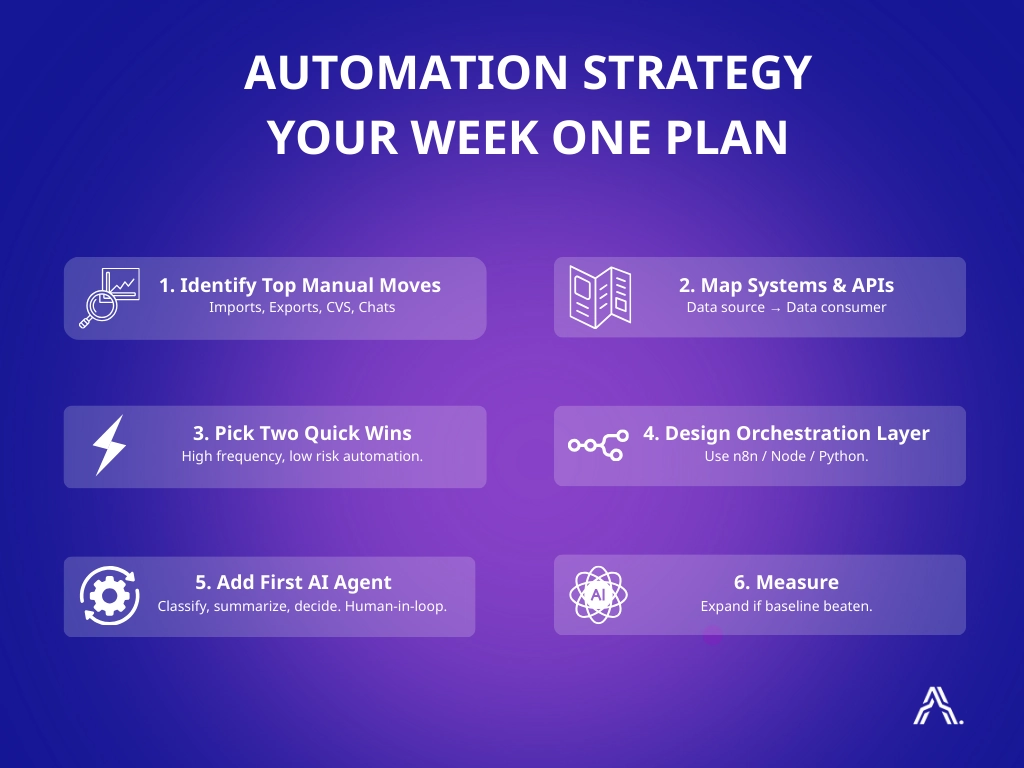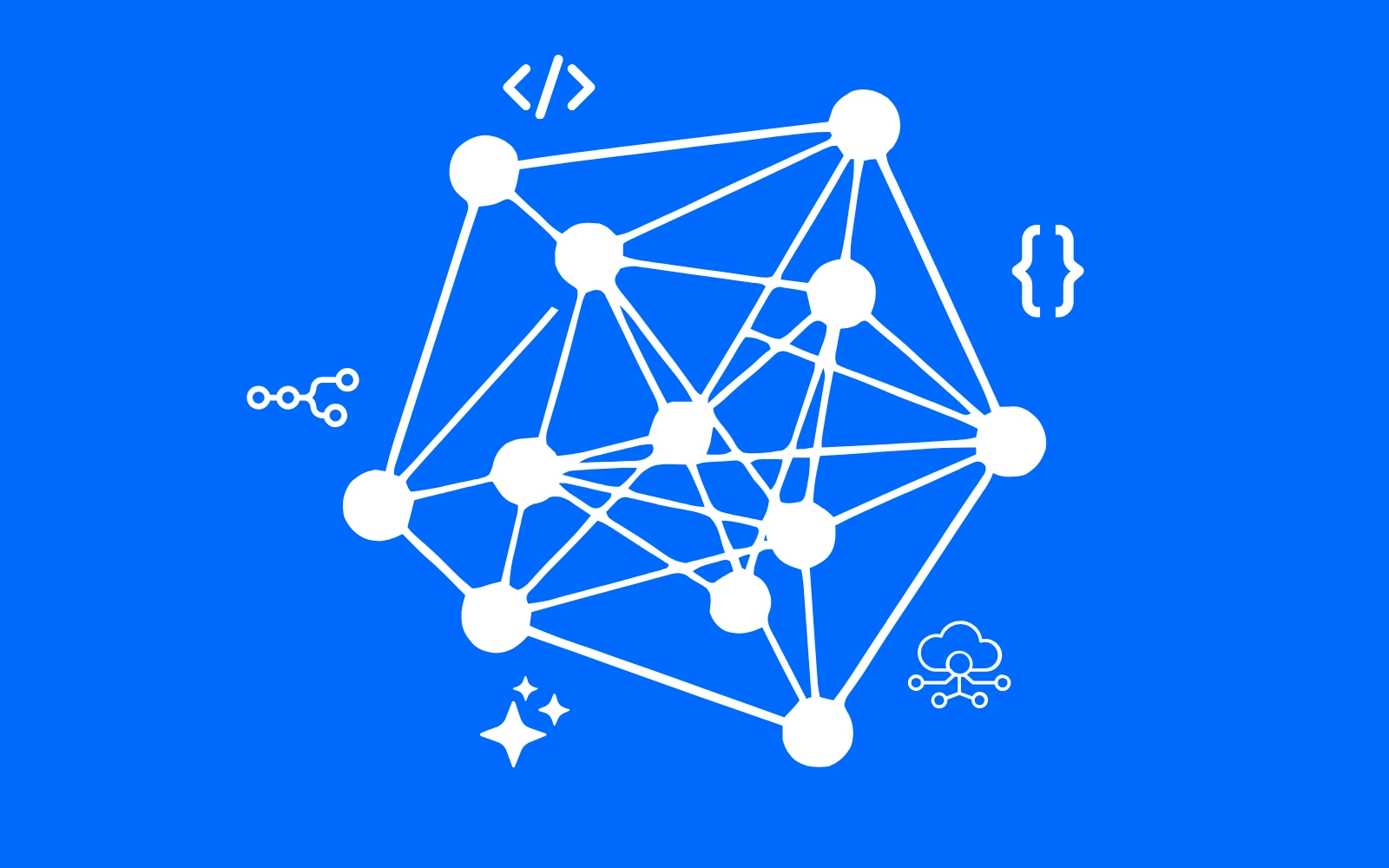If your tools are not talking to each other, your team is busy working. Hyperautomation with APIs fixes that. It connects your systems, lets AI agents act on live data, and removes manual steps that slow you down. The goal is not to replace people. The goal is to clear the queue so your team can focus on work that moves the business.
Big picture, research shows the upside is real. McKinsey estimates AI could add between $2.6 and $4.4 trillion in value each year, with automation driving a chunk of that productivity. McKinsey & Company
What hyperautomation with APIs is, in plain English
- Basic automation handles one task at a time.
- Hyperautomation with APIs connects many systems and lets AI agents coordinate full workflows from input to outcome.
A simple mental model:
- AI is the brain that learns from your data and makes choices.
- APIs are the nervous system that move data between tools.
- Automation is the muscle that performs the action and reports back.
Example: a sales order lands, stock is checked, a pick ticket is created, the customer gets tracking, finance sees the invoice draft. No copy-paste, no “did anyone update this” moments.
To truly grasp the power APIs bring to hyperautomation, let’s visualize their core benefits and transformative effects across your operations.

Proof it works
- Banking: JPMorgan’s COIN system reviews complex agreements in seconds, work that used to consume about 360,000 legal hours a year. Bloomberg
- Retail and supply chain: Walmart describes how its AI inventory system places products where demand will hit, while partnerships in robotics continue to push automation in distribution. Walmart Global Tech
- Telecom: Verizon says its GenAI program aims to prevent 100,000 customers from leaving by predicting call reasons and routing to the right agents, cutting service time and churn risk. Reuters
- Healthcare: Cleveland Clinic documents how automation has freed nursing teams from routine clerical work so they can spend more time on patient care. Cleveland Clinic
- Manufacturing: Siemens highlights AI-based predictive maintenance that spots issues early and keeps assets online. Less downtime, better throughput. Siemens
Zooming in on churn specifically, McKinsey reports that analytics-driven base management can reduce telecom churn by as much as 15 percent. It is a good example of how linked data, models, and actions can protect revenue. McKinsey & Company
How APIs make hyperautomation possible
Before we get into it, what are APIs? Application Programming Interfaces are the contracts that connect your tools and services. APIs are the contract that lets your CRM, data warehouse, ticketing tool, marketing platform, warehouse system, and AI agents speak the same language.
- Event in, action out: Use webhooks to trigger workflows the moment something changes.
- One source of truth: Write back clean results, including errors, so humans always see the latest state.
- Audit and safety: Log every step. Keep secrets in a vault. Rate-limit and retry safely.
When this backbone is in place, your AI agents do not sit in a silo. They act inside your stack, with context, guardrails, and full traceability.
What this looks like at Autonomous
We build hyperautomation with APIs for real businesses. A few snapshots:
- League of Basketball
We connected and standardized multiple sports data feeds via APIs—live matches, leagues/standings, player/team stats, and news—exposing clean REST/GraphQL endpoints to apps. WebSocket channels stream real-time scores and key events with low latency, while caching and rate-limit guards keep everything fast and resilient on game day. - SENE, D2C apparel
Orders from Shopify flow into production steps through APIs. We predict measurements for standard sizing, route orders, and update status back to the customer. Returns that meet rules re-enter inventory, so cash is not locked up. Finance and CX see the same truth. The result feels simple to the customer because the API plumbing does the hard work. - Transcending Legal
A long disability benefits application becomes a guided conversation. Answers map to form fields, supporting docs are requested, PDFs are generated, and status is tracked. The system uses APIs to pull, validate, and store data, then push final packets where they need to go. Less friction for applicants, fewer rework loops for staff.

Core patterns we rely on
Webhooks first: Act on events instead of polling. Faster, cheaper, cleaner.
Idempotent writes: Safe retries mean no duplicates.
Retries with backoff: Networks fail. Design for it.
Dead-letter queues: Capture the weird edge cases and fix them once.
Human-in-the-loop gates: Simple approvals for high-risk steps.
Privacy by design: Scope tokens, mask PII, and rotate secrets.
Observability: A run id on every job, structured logs, and dashboards for throughput, failures, and latency.
Example workflow: lead to revenue, end to end
- A prospect fills a form. Webhook fires to your orchestrator.
- An AI agent classifies intent and quality, cites its reasoning, and suggests next steps.
- API call creates or updates the record in your CRM with the right owner and stage.
- If intent is support, create a ticket with context included.
- If pricing is requested, hit your quoting service, build the draft, and send for human sign-of.
- Analytics tags the session so marketing can attribute revenue correctly.
No chasing. No spreadsheets. The system carries the baton from handoff to handoff.
Measuring value without the hype
- Cycle time: How long from event to outcome
- Error rate: Exceptions per 100 runs.
- Manual touches: Count and remove.
- Customer wait time: Response and resolution time.
- Cost to serve: Human minutes per case.
Public examples back this up. Banks compress legal review from months to minutes. Retailers improve stock placement and speed. Telcos lower churn by acting early. Health systems free nurses from paperwork. These are different sectors, same pattern, and APIs are in the middle. Bloomberg
Common roadblocks, and how we handle them
- Messy IDs across tools.
Create a canonical ID map and reconcile once. - Rate limits.
Queue work, batch when possible, and sleep between bursts. - Shadow IT scripts.
Replace brittle one-offs with a visible, logged service. - Security review delays.
Document scopes, data flows, and retention. Keep secrets in a vault and rotate on a schedule. - Model drift.
Log predictions, gather outcomes, and retrain on a cadence.
Your 30-60-90 day roadmap
- Days 1-30: Inventory your API surface, pick two quick wins, ship a stable orchestrator, and add dashboards.
- Days 31-60: Add your first AI agent where classification is painful. Wire approvals for high-risk actions.
- Days 61-90: Expand to a second workflow. Move from “pilot” to “program” by adding tests, playbooks, and a clear owner.
FAQ, fast answers
Is this only for large companies?
No. Start with two workflows and grow.
Do we need a data lake first?
Not to start. Good event design and clean contracts go a long way.
What about compliance?
Keep scopes tight, log every action, and retain only what you need.
Will this replace my team?
It will remove busywork and let your team handle judgment calls and coaching.
Want a plan built around your stack?
At Autonomous, we design and ship hyperautomation with APIs that your team can trust. If you want a teardown of your top ten manual moves, we can map it, size the impact, and build a small, safe first release.




